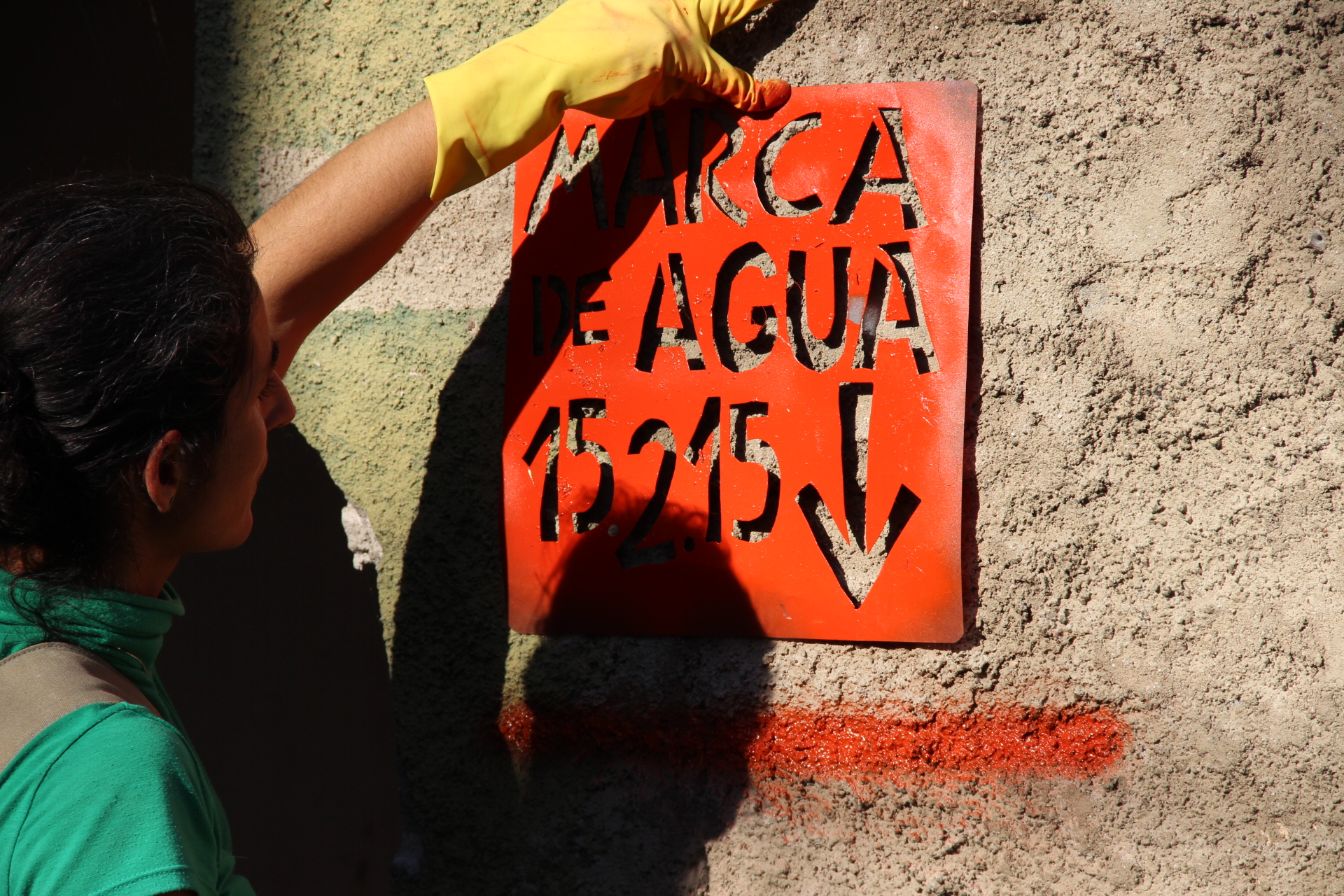Road traffic incidents are the leading causes of death among young people in Argentina. According to the National Agency of Road Safety (Agencia Nacional de Seguridad Vial- ANSV), in 2017, 5.611 died in the streets and roads of the country: 2.330 were between 15 and 34 years old. Every 4 hours a young person dies of avoidable cause. Efforts are being made at the national level to mitigate this epidemic. Mendoza, one of Argentina’s provinces has been able to reduce the death toll due to road traffic incidents.
“Manuel did not die in an accident. My 18-year-old son was run over by a 20 years old young man who was driving while intoxicated, and he killed him”, specifies Ema Cibotti. She adds: “an accident is something accidental, unexpected and rare, whereas crashes, overturns, hit-and-runs and impacts have nothing to do with that. They can be foreseen and avoided”.
The semantic correction looks like just a detail. Nevertheless, it holds the key to the problem: deaths caused by traffic violence can be prevented.
Manuel died on May 15, 2006, in the city of Buenos Aires. Sometime later, Cibotti founded the Civil Association Working Against Insecurity and Traffic Violence (ACTIVVAS for its name in Spanish), that promotes the debate about these behaviors.
Today, a yellow star with Manuel’s name stands on the site where he was killed. With these signs, relatives of the victims not only seek to remember them but also help raise awareness among drivers and pedestrians. There are more than 50,000 stars with the motto “Not adding up one more star to the sky is up to you” throughout Argentina.
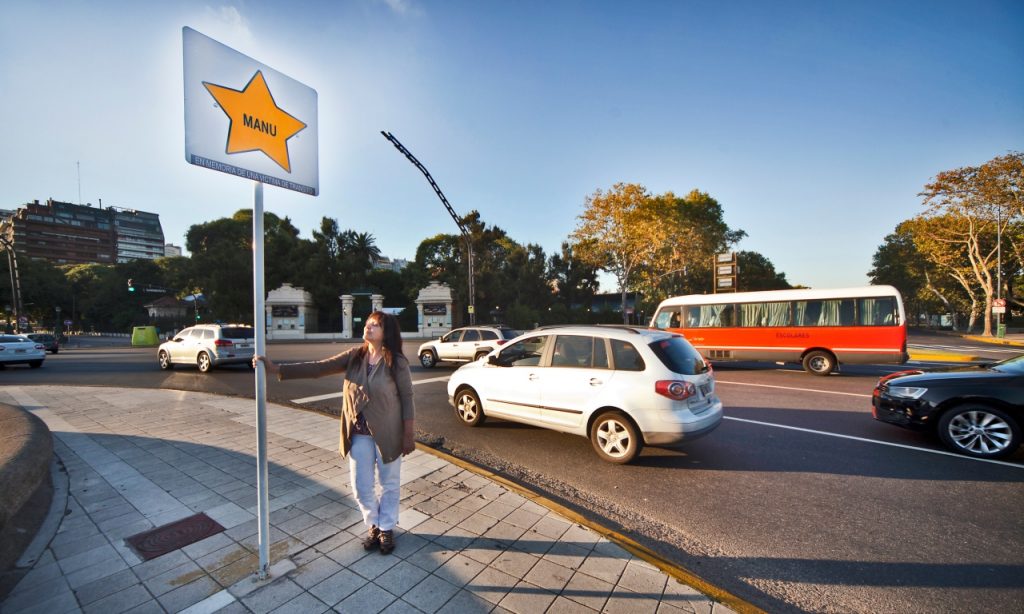
Ema Cibotti. Photo: Pablo Tesoriere
According to ANSV most recent information, in 2017 137.567 traffic incidents took place. They provoked 5.611 deaths and injured 118.550 people. Of those injured, 89% were non-fatal and 11% were seriously injured.
A Pan American Health Organization (PAHO) which analyzed causes of death in the American continent between 2000 and 2014 in youth age range 10 to 24 years old highlights that Argentina is one of the countries were traffic incidents have increased the most.
Traffic incidents are one of the leading causes of death among youth almost in every country of the world. However, the World Health Organization (WHO) estimates that 93% of the world's fatalities on the roads occur in low- and middle-income countries (Argentina among them); although these countries only have 60% of registered vehicles in the world.
The extent of these deaths are a worldwide concern. In May 2011, the UN General Assembly officially proclaimed the Decade of Action for Road Safety 2011–2020 with one main goal: to put road safety in every government's agenda.
According to WHO, “every year the lives of approximately 1.35 million people are cut short as a result of a traffic crash”.
Although Argentina is not among the Latin American countries with the highest mortality rates due to road traffic incidents, it does go beyond WHO's established value for a disease to be considered as an epidemic.
How do we drive?
The main risk factors for road traffic injuries (as determined by WHO) are speed, driving under the influence of alcohol and other recreational drugs, the lack of use of seat-belts and child restraints, as well as crash-helmets not worn by users of two-wheeled vehicles; elements of distraction; drowsiness and fatigue.
All are preventable causes that can help reduce the probability of road traffic incidents. Key factor when it comes to developing public policies to reduce the number of traffic incidents.
In Argentina, the ANSV throughout their Traffic Observatory has already studied in depth some of the main factors:
Driving under the influence of alcohol (drunk-drivers). In March 2018, the Observatory submitted a report that shows that the highest consumption rate of alcohol in general, not necessarily at the time of driving, is among 18 to 24 years old, representing the 79%. While the age range 25 to 34 years old slightly reduced its consumption.
According to the same study, Argentina is the second alcohol consumer of South America, after Peru, with 16 liters per year. Although precise national statistics do not exist, the report estimates that in 2015 the deaths due to road traffic incidents tied to the consumption of substances represented near 5%. In fact, from the total of young drivers that were assisted at a public hospitals due to a car incident, 28% had consumed alcohol in the previous hours.
The study also revealed that in 2016 27% of young Argentineans between 16 and 35 years old car drivers and 29% of the young motorcycle drivers, according to their own statements had been driving under the influence of alcohol.
As a conclusion, the report observed that among young people driving is a symbol of freedom, independence and adulthood. While drinking alcohol implies higher sociability, enjoyment and company with friends. Moreover, young people don’t believe consuming alcohol and driving may have any costs. On the one hand, because they don’t perceive the risk of suffering traffic accident while driving under those circumstances and, on the other, because they don’t feel that the government can control and or punish them.
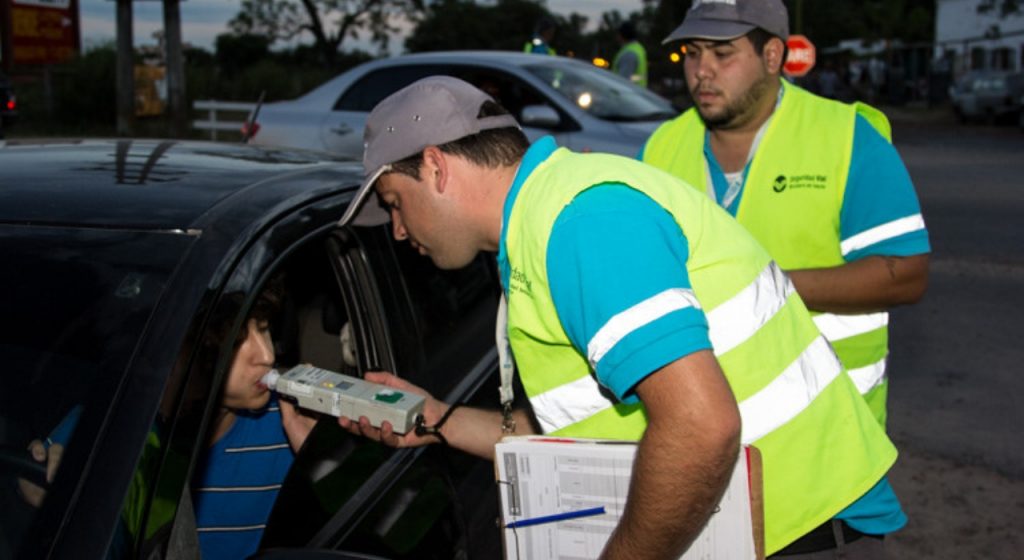
Then, why should young people stop doing something that they perceive as benefficial? The study considers that the decision of drive-drinking should be penalized. It is therefore vital to introduce controls and sanctions that lead up to behavioral changes.
It also recommends to make youth aware on the risks (physical and mental) present on the possibility of a car incident caused by the intake of alcohol. “Awareness must include the implementation of campaigns, whose contents include the conclusions of this research so that youth question themselves on their actions”, the report concludes.
Wearing the seat-belt. In the last observational study about Road Safety Situation in Argentina made by ANSV and published in March 2018, it determined that in Argentina only 43.6% of the vehicles travel with all of their occupants making use of the seat belt. This represents only 4 out of 10 vehicles; although its use is mandatory by law since 1994 .
The survey also revealed that when drivers use seat belts more often than other vehicle occupants. Female drivers protect themselves more than male drivers (58.4% and 48.6%, respectively).
Of course, the use of the seat belt, regardless of the position, varies according to the region. The area of Cuyo shows a rate of use much higher than the national standard, while de regions of NEA (North East of Argentina) and NOA (North West of Argentina) register the lower rate of use in the national territory.
The report also observed that 7 of 10 underage (0 to 17 years old) traveled totally unprotected, due to not using the seat belt or because of it’s wrong use.
The use of car lights. Another important aspect related with the security elements of the car is the use of the daytime running lights (DRL) during the day. The report states that, although since 2013 the use of DRL is increasing, for 2016 only 4 out of 10 vehicles used them.
Motorcycles and helmets: The ANSV registers a sustained growth (nationwide) in the use of helmet since 2011 until 2014, showing stability to 2016. But even with the increase, only 6 out of 10 motorcycles traveled with all of their occupants correctly protected with helmets.
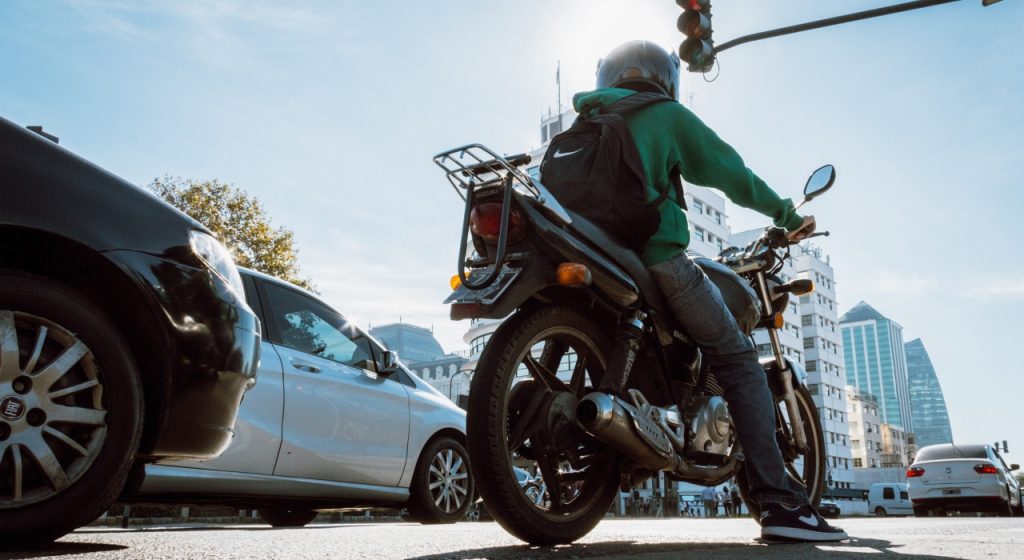
On the other side, surveys show that the north region of Argentina is the region that uses the fewer amounts of security elements. The relevance is high, when we observe that this is the region that presents the highest rate of two-wheeled motorization and a scarce use of the helmet.
In this context, we can visualize the challenge to continuuingly raise awareness on the use of the helmet and in the development of local plans of road safety with special attention given to the motorcycle driver.
As it occurs with the seat belts, if the driver uses the helmet it has a positive influence in the other motorcycle occupants.
Finally, only 4 of 10 motorcycles use DRL. The regions of NEA and NOA are the ones that register the lower rates of use of lights.
The use of road security elements in urban areas is less than the use in rural areas, although these last ones don’t reach a level of desired use.
After analyzing this variable, the ANSV argues that “the traffic behaviors in Argentina are characterized by high levels of transgression of the transit safety regulations. Transgression that is associated, on the one hand, to issues perceived from the context, and on the other, with attitudinal issues like the lack of habit, installed beliefs around driving, and sensory factors that affect the use of traffic safety elements. All this, as we could observe, is framed in an Argentinean culture characterized by the lack of attachment to the law”.
The provinces with more traffic accidents
The diagnosis of road traffic safety situation in Argentina proves that there are two highgly compromised zones within road traffic safety. One zone that gathers the highest amount of road traffic deaths: the metropolitan area of Buenos Aires and the Pampa region. And another, the higher rates of mortality take place (in relative termas): the north of Argentina.
Within a federal country, the ANSV has a number of challenges at national scale: to continue to boost the creation of traffic observatories thorught the country; to investigate unexplored issued that could offer solutions and promote upgrades in the legal norms so as to increase efficiency and control effectiveness.
Mendoza's success
In this province, the rate of use of elements of road safety is much higher than at a country level.
That is why the ANSV decided to investigate one of the factors that made it possible, with the aim of making a good practice of management manual that could be shared within the rest of the jurisdictions that want to generate positive changes in road safety matters in their own territories.
From this survey, Mendoza shows that 8 out of 10 drivers use the seat belt, while only 3 out of 10 back seat occupants do it as well. Thus, the province shows the higher rat of seat belt use in the country.
It is important to consider that, according to WHO, the use of seat belt decreases the risk of death of front seat occupants of a vehicle between 40% and 50%, and 25% and 75% for back seats occupants.

As well as with the seat belt use, the use of appropriate child retention systems in the province of Mendoza is superior to the regional and national rate, reaching 71.3% of children between 0 and 4 years old that travel in the back seat of a car.
WHO points out that the child's restraint, if installed and used correctly, reduces a 70% of the deaths in under 1 year olds, and between 54% and 80% of the children of short age.
The same occurs with the use of helmets by the motorcycle drivers. Wearing a motorcycle helmet correctly can reduce the risk of death by almost 40% and the risk of severe injury by over 70% (WHO). In Mendoza 9 out of 10 people that ride a motorcycle use a helmet.
In terms of traveling with the lights on, it was observed than only 4 out of 10 vehicles of 2, 4 or more wheels do it on national level. While in Mendoza the rate of use rises up to 88, 4% for vehicles with 4 wheels (or more) and to 82.3% for 2 wheels vehicles.
However the mortality rate in Mendoza (14.4) was superior to the registered rate for the national total (12.7) in 2016, showing the province still faces challenges regarding road traffic incidents. Moreover, in Mendoza 44, 3% of road traffic deaths are among young people, between 15 and 34 years old.
The measures that were implemented
Mendoza adopted a traffic law that prioritized the mandatory use of the seat belt, helmet and DRL, generating awareness and concrete actions to increase the level of use by the citizens.
Then, the province looked for consensus among different boroughs, legally forbidding that they be in conflict with the provincial regulation.
This coordination of priorities encouraged the creation and designation of the intervenient organs in the administration and of road safety, key aspect for the implementation of control mechanisms and effective sanctions.

It also worked preparing citizenship in the acceptance of the new traffic requirements, essential when the problem lies in modificating a socially deep-rooted behavior.
Besides, there was a period of grace that included some mechanisms to make more accessible the acquaintance of safety elements. After which strong vehicle control were unfolded, with their consequents sanctions, generating visibility of power of audit in the streets to generate higher legitimacy.
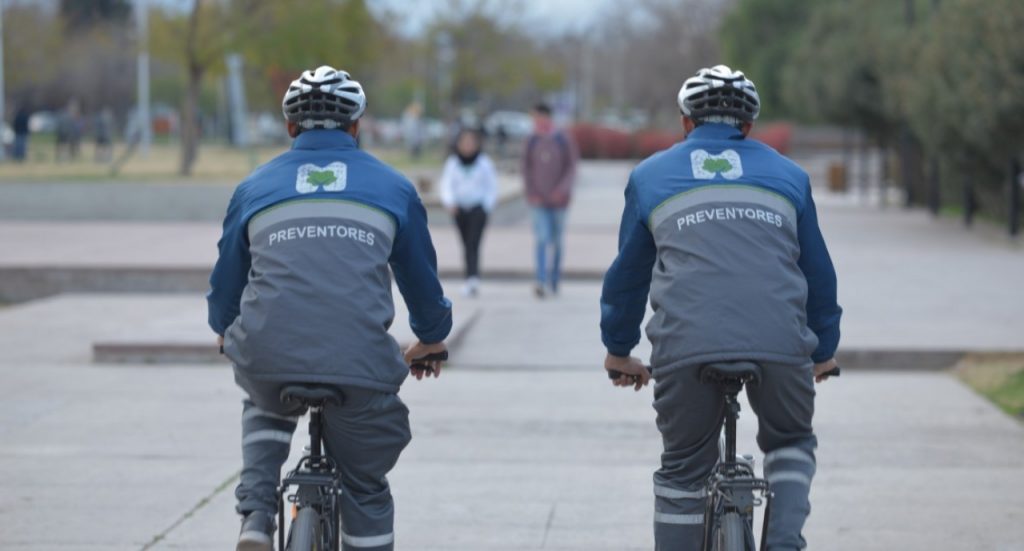
The study about Mendoza shows the challenges ahead: "The province registers road traffic fatality rates higher than country level that could be related to other risks factors not studied until now, for example: overspeed, and the intake of alcohol before driving or driving distractions".
In order to reach all the country, few weeks before the ANSV launched the Federal Network of Victims Assistance and Relatives from Victim's Road Traffic Accidents. The organization gave legal, psychological, social and rehabilitation counseling in the post emergency traffic. Gathering provinces, boroughs and private organisms, which offer their resources and articulate at an inter-jurisdictional level.
For Ema Cibotti, a mom of a car traffic violence victime, the creation of a Federal Assistance Network for victims and relatives of victims is a huge achievement. “The day after is the worst day. You don't know what to do and in general the decisions you take aren't the best ones", she explains. As she repeats several times during the interview: "the change of the social habits that lead to car traffic violence is a long term collaborative work. We have to be tenacious and not give up".



